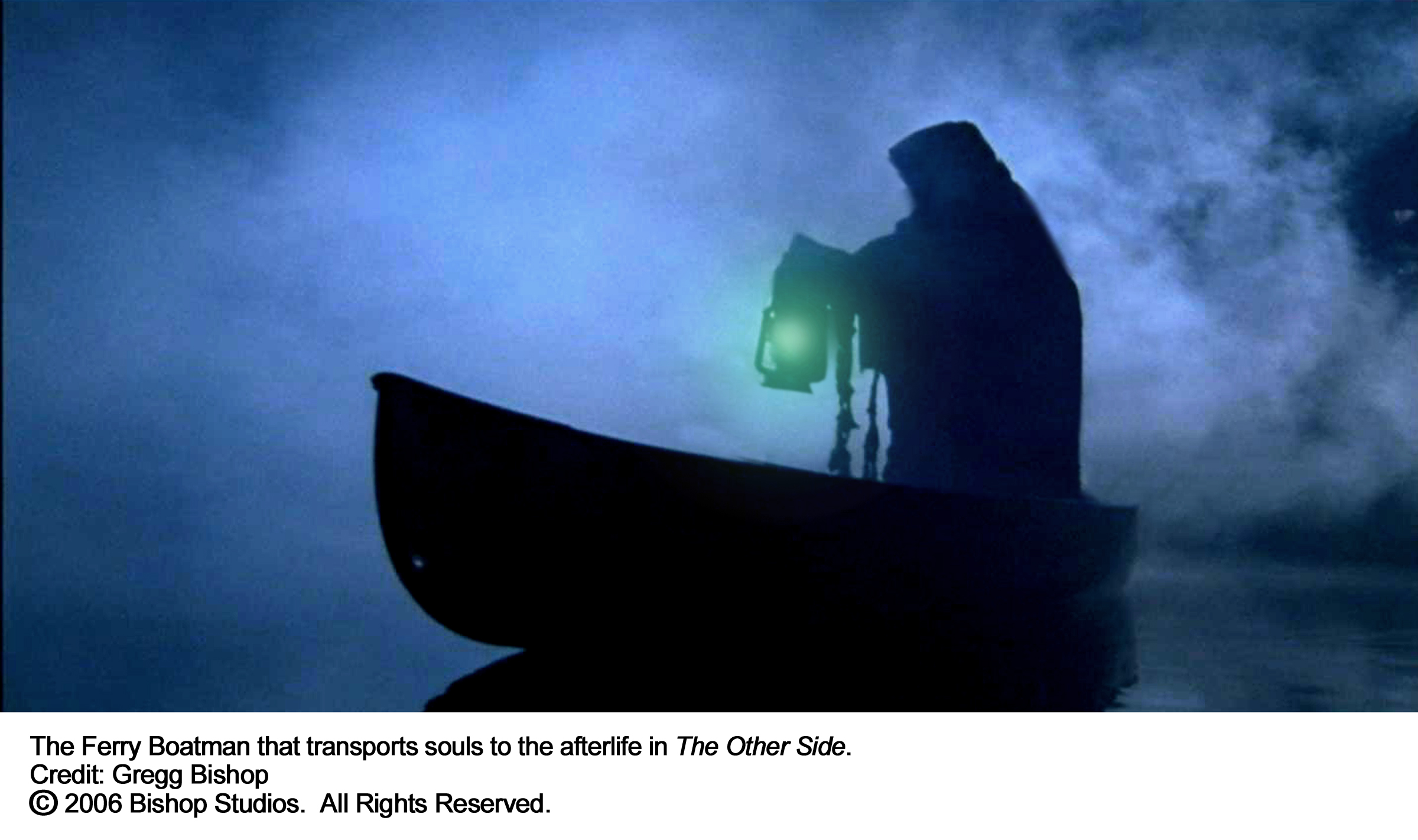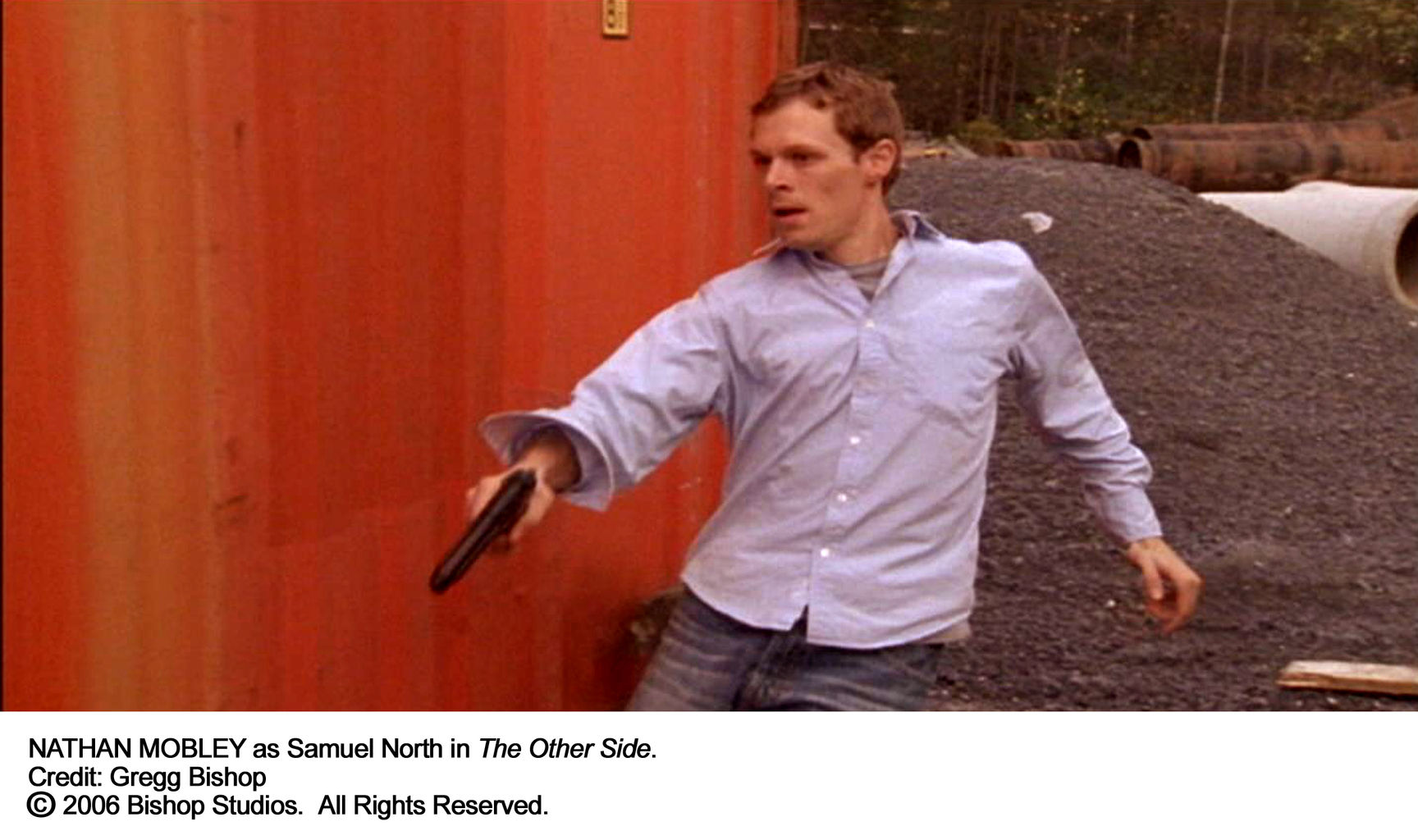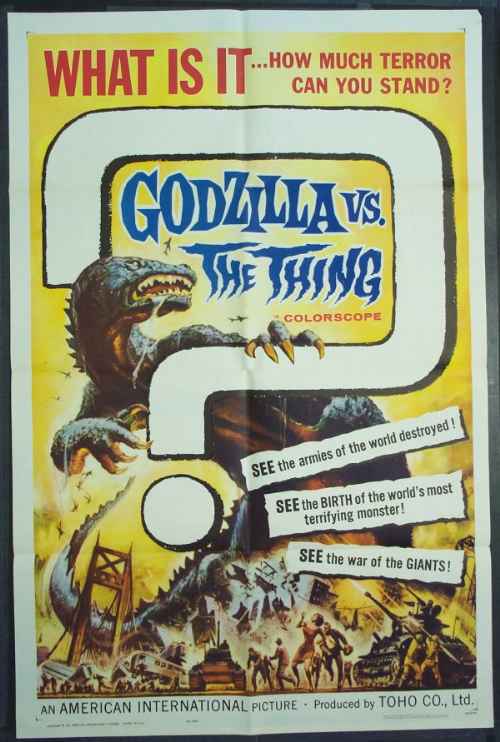 Among fans and critics, this is generally considered the best Godzilla sequel from the original series of films, which ran from GOJIRA in 1954 to TERROR OF MECHA-GODZILLA IN 1975. (The monster was revived for two subsequent series, beginning in 1984 and 2000, respectively, plus the 1998 American film produced at TriStar.) MOTHRA VS. GODZILLA shows the Toho team (director Ishiro Honda, writer Shinichi Sekizawa, composer Akira Ifukube, and effects expert Eiji Tsuburaya) working in top form. Although the dark and serious tone of the original GOJIRA is long gone, the series had yet to descend into the juvenile antics of the 1970s. Only occasional penny pinching (fewer composite shots and elaborate miniatures) and a handful of minor gaffs mar this colorful, elaborate fantasy film, which is thoroughly enjoyable for fans and children, and might even impress a few non-fans.
Among fans and critics, this is generally considered the best Godzilla sequel from the original series of films, which ran from GOJIRA in 1954 to TERROR OF MECHA-GODZILLA IN 1975. (The monster was revived for two subsequent series, beginning in 1984 and 2000, respectively, plus the 1998 American film produced at TriStar.) MOTHRA VS. GODZILLA shows the Toho team (director Ishiro Honda, writer Shinichi Sekizawa, composer Akira Ifukube, and effects expert Eiji Tsuburaya) working in top form. Although the dark and serious tone of the original GOJIRA is long gone, the series had yet to descend into the juvenile antics of the 1970s. Only occasional penny pinching (fewer composite shots and elaborate miniatures) and a handful of minor gaffs mar this colorful, elaborate fantasy film, which is thoroughly enjoyable for fans and children, and might even impress a few non-fans.
The story follows a reporter, Ichiro (Takarada), and his female photographer Nakanishi (Hoshi), who are covering a story about a giant egg that washed ashore after a typhoon. A greedy businessman buys the egg from the local fisherman and, along with his investment partner, plans to build a theme park around it. The Shobijin (twin fairies from Infant Island, home of Mothra) arrive and ask for the return of the egg; the reporters, along with a sympathetic scientist (Koizumi) try to help, but they are unable to persuade the egg’s new owners to relinquish their legal rights in favor of doing the right thing.
Unfortunately, it turns out that Godzilla was also washed ashore by the typhoon; the monster arises from the sandy plain where he was buried and goes on a rampage. The reporters and the scientist head to Infant Island to beg the natives for Mothra’s help. The natives and the Shobijin, whose island was decimated by nuclear testing, are unsympathetic; after all, the so-called civilized world did not help them in their quest to return the egg. The men are ready to give up, but Nakashina makes a heart-felt, emotional plea, which convinces Mothra to join the fight. The giant moth dies in the battle with Godzilla but manages to protect her egg, which hatches not one but two young larvae. The greedy businessmen die while fighting each other in a hotel, which Godzilla trashes. The larvae pursue Godzilla to an island close off shore, where they cocoon him in their sticky web until he falls off a cliff, disappearing beneath the ocean.
MOTHRA VS. GODZILLA is a virtual remake of 1963’s KING KONG VS. GODZILLA: In both films, Godzilla is a radioactive monster threatening Japan, and his opponent is an over-sized animal living on a South Seas island where the natives revere him/her as a god. Both films feature island natives distinguished by their strange skin color (green in the previous film, orange here). Both films feature none-too-subtle attacks on corporate greed that puts profits ahead of morality. And both films end with Godzilla defeated by his foe, falling off a cliff and disappearing beneath the ocean (until the next film, of course).
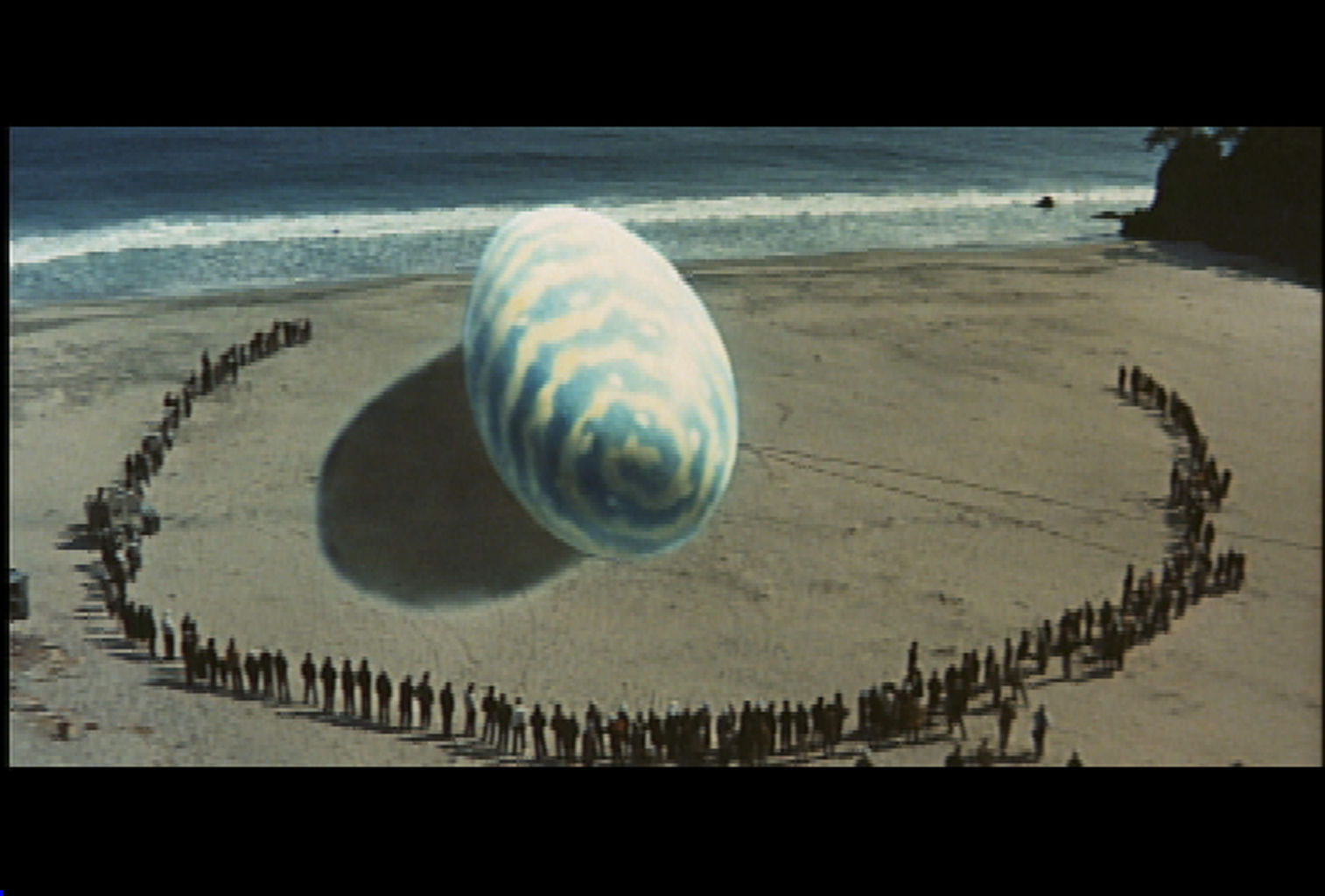
The chief difference between KING KONG VS. GODZILLA and MOTHRA VS. GODZILLA is that the previous film was a deliberate satire that poked fun at its corporate villains and played its monster battle for laughs, including much anthropomorphized wrestling action. MOTHRA VS. GODZILLA, on the other hand, features some comic relief but generally plays its story straight, and the monster action remains mostly animalistic in nature, avoiding the jump-kicks, somersaults, and back-flips performed by Kong and Godzilla.
Thanks to her colorful wings and graceful movements, Mothra creates a wonderful visual contrast to Godzilla’s scaly reptilian appearance, making her perhaps the best foe ever to square off against the nuclear monster. MOTHRA VS GODZILLA lacks the gravitas of the original GOJIRA; this is not a believable science-fiction story but an imaginative fantasy that requires a suspension of disbelief. Taken on its own terms, it works wonderfully well, even though it’s well past the time when Godzilla could frighten an audience as a walking metaphor for nuclear destruction and the horrors of war.
The result is fast-paced, exciting fun. The film is even moving, when Nakanishi begs the Infant islanders for help in spite of the wrongs they have suffered. The human cast take their roles seriously; the script delivers its message clearly (that humanity should work together for a better world) without being heavy-handed. The elaborate production, with its large cast, numerous locations, and extensive sets, is wonderfully helmed by Honda. And the special effects, though not always convincing, are beautifully done and always entertaining to watch.
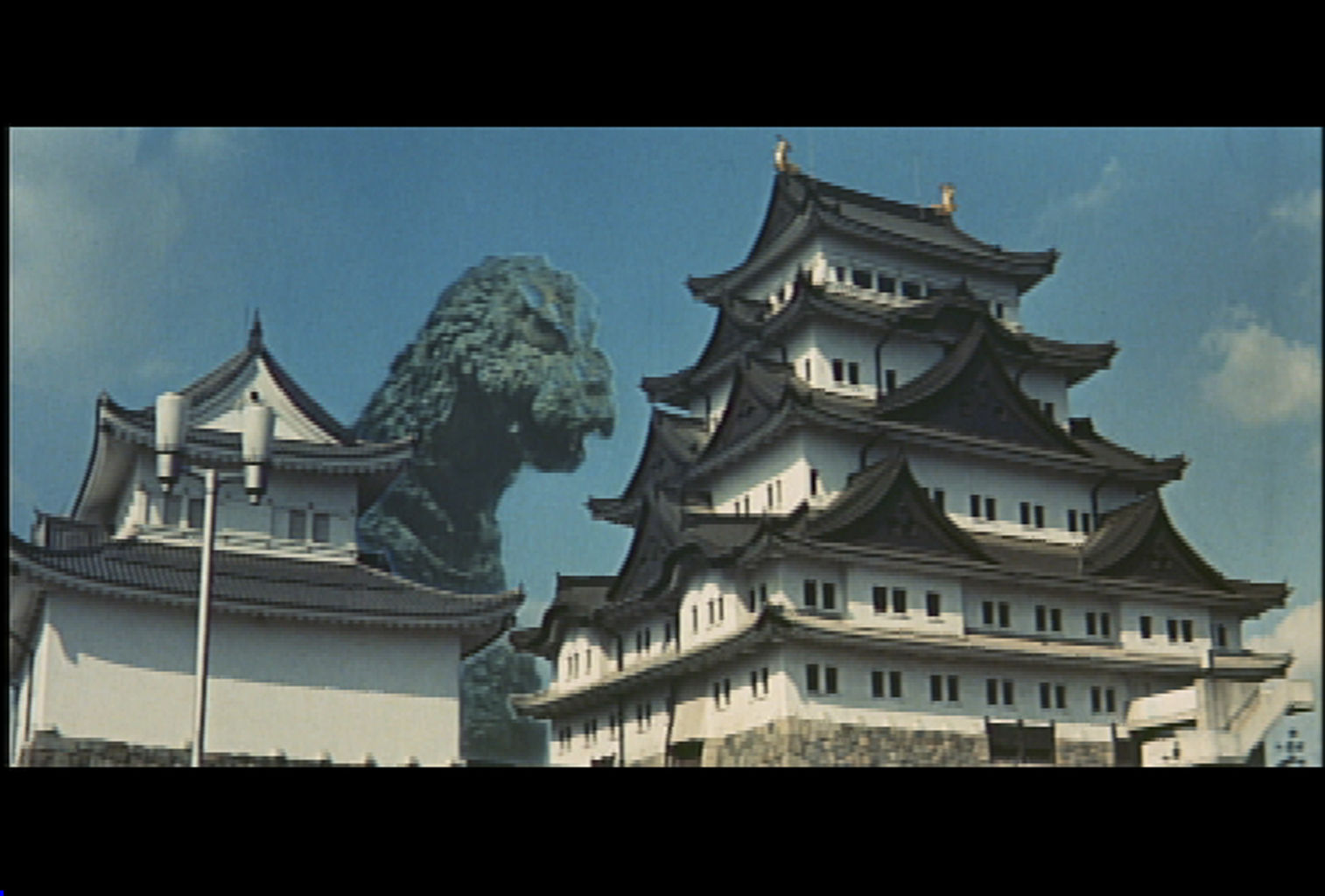
MEMORABLE MOMENTS
In one of the greatest scenes in the series, a coordinated military attack strikes Godzilla with canon blast from the ground and napalm bombs from above. When the smoke clears, we see Godzilla with his head thrown back, roaring; as he lowers his face, it suddenly becomes clear that the top and back of his head is on fire! Amazingly, the shot continues a moment longer as Godzilla turns and strides away; it’s hard to believe that half a dozen crew people did not immediately rush into the shot with fire extinguishers instead of allowing suit-actor Haruo Nakajima to continue with the action.
GOOFS
Just before Godzilla leaves shore for the showdown with the Mothra caterpillars, there is a long shot of Godzilla striding along a miniature shoreline that we assume to be on the mainland. Moments later, after Godzilla has crossed the water to a nearby island, the same miniature shoreline is used to represent the island. Clearly, the miniature was built to represent the island. For some reason, the editor took a brief trim from this footage and used it to augment Godzilla’s appearance on the mainland, which otherwise consisted of live-action shots of actual locations, with Godzilla optically inserted into the background.
TRIVIA
The Godzilla suit for this film is one of the favorites among fans. It is lighter and less bulky, allowing for greater movement. The face loses some of the reptilian features from Godzilla’s previous appearances, in which he somewhat resembled a T-Rex mutated by atomic radiation. Its furrowed brows convey a sinister appearance, suggesting a bit more malevolent intent (as opposed to animal instinct) that helps contrast Godzilla with the benign Mothra.
This version of the Godzilla suit is also memorable for another reason: apparently through some kind of accident, the top jaw came loose during filming; it can be seen wobbling during Godzilla’s early scenes. Although an accident, this actually lends a bit of animation to Godzilla’s usually expressionless face.
As with the previous films in the series, a hand-puppet head was used for some close-ups of Godzilla. Typically, the close-up head does not completely match the head worn by Haruo Nakajima, the actor inside the rubber suit.
For some long shots of Godzilla crossing the ocean to a small island, the old suit from KING KONG VS. GODZILLA was used. The suit was also used for the shot of Godzilla, covered in Mothra’s web, tumbling over a cliff and into the ocean for the conclusion. This was done to avoid wear and tear on the new suit, as past experience had shown that the foam rubber Godzilla suit did not hold up well in water.
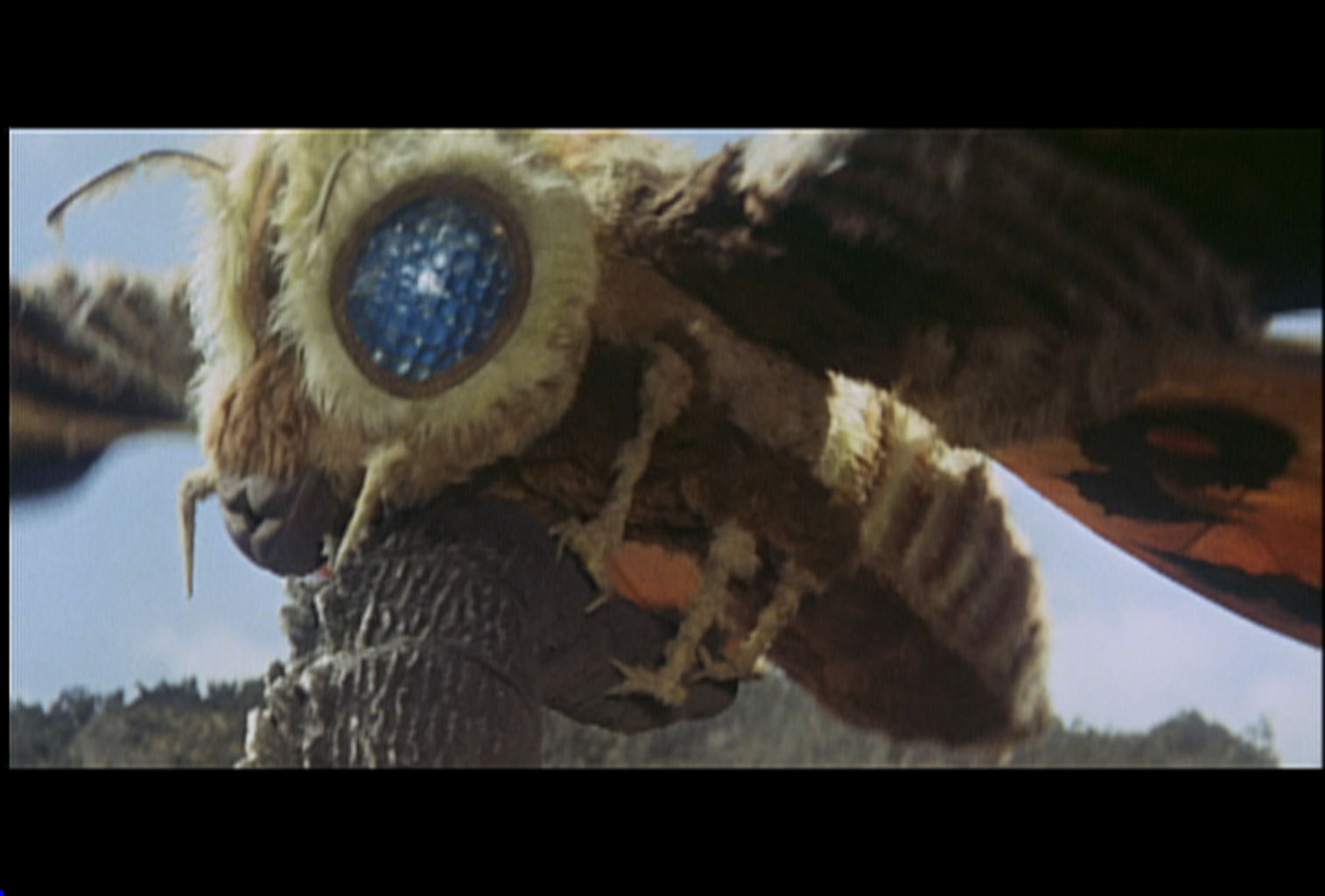
Although the flying moth puppet from MOTHRA (1961) was reused for some shots, new puppets were built for Mothra in moth and larvae form. This was because the original puppets were created in a different scale and would not have appeared the correct size if photographed in the same shot with the Godzilla suit.
There is less building-bashing in MOTHRA VS. GODZILLA than in previous films. In an effort to keep the budget down, Godzilla briefly attacks a city after his first appearance, then heads to rural areas for most of the rest of the movie. His fight with Mothra in moth form takes place near a sandy beach; his fight with the larvae takes place on a rocky island.
The original title is “Mosura tai Gojira,” which translates as “Mothra versus Godzilla.” The U.S. distributor, American International Pictures, retitled the film “Godzilla Vs. The Thing” and mounted an advertising campaign to create a mystery regarding exactly what sort of foe Godzilla would fight. To justifying the title, the English dubbing includes a few lines of dialogue in which “Shobijin” (small fairies played by identical twins Emi and Yumi Ito) refer to Mothra as “The Mighty Thing.”
This is the only Godzilla film that contains more footage of Godzilla in the export version than in the Japanese original: the English-dubbed U.S. prints contain an early sequence in which the American navy attacks Godzilla on the beach with “Frontier” missiles, knocking the monster down but not killing him. Exactly why this scene is in the American verson but not the Japanese version has never been definitely explained. A common assumption is that the sequence was added to please U.S. distributor, but according to author Steve Ryfle (Japan’s Favorite Mon-Star), the scene existed in the original script, even before a U.S. distribution deal was signed. What is clear is that the Frontier missile sequence was not simply cut out from Japanese prints and retained in U.S. prints: two versions were filmed of the scene that immediately precedes the Frontier missile attack. In the Japanese version, a group of officials sit around a table discussing strategy, and a messenger arrives to report on Godzilla’s movements; this is followed by a shot of Godzilla walking through a hilly area, suggesting that he is moving away from the city. In the American version, the shot of Godzilla appears immediately after his first attack on a city; then the film cuts to the strategy meeting, with a slightly different group of officials, including a handful of Americans, sitting around the same table and discussing plans to use the new missiles. The fact that two versions of this scene were filmed suggests that there was a deliberate attempt to create an “alternate” version for U.S. consumption.
Emi and Yumi Ito were well known in their native land as the singing duo The Peanuts. Here, they sing both the “Mothra” song composed by Yuji Koseki for MOTHRA (1961), plus a “Lament for Infant Island” composed for this film by Akira Ifukube.Despite a few minor editorial changes (the addition of the Frontier missile sequence, the deletion of a shot of one villain with a bloody head after being gunned down by his partner), the Americanized GODZILLA VS THE THING remains mostly faithful to the Japanese original. In fact, this is the first Godzilla film to reach U.S. shores without major alterations: there is no new footage added by the American distributor; the dubbing retains most of the story and dialogue, and Akira Ifukube’s score is left intact (except for a brief edit to the Shobijin’s lament for Infant Island).
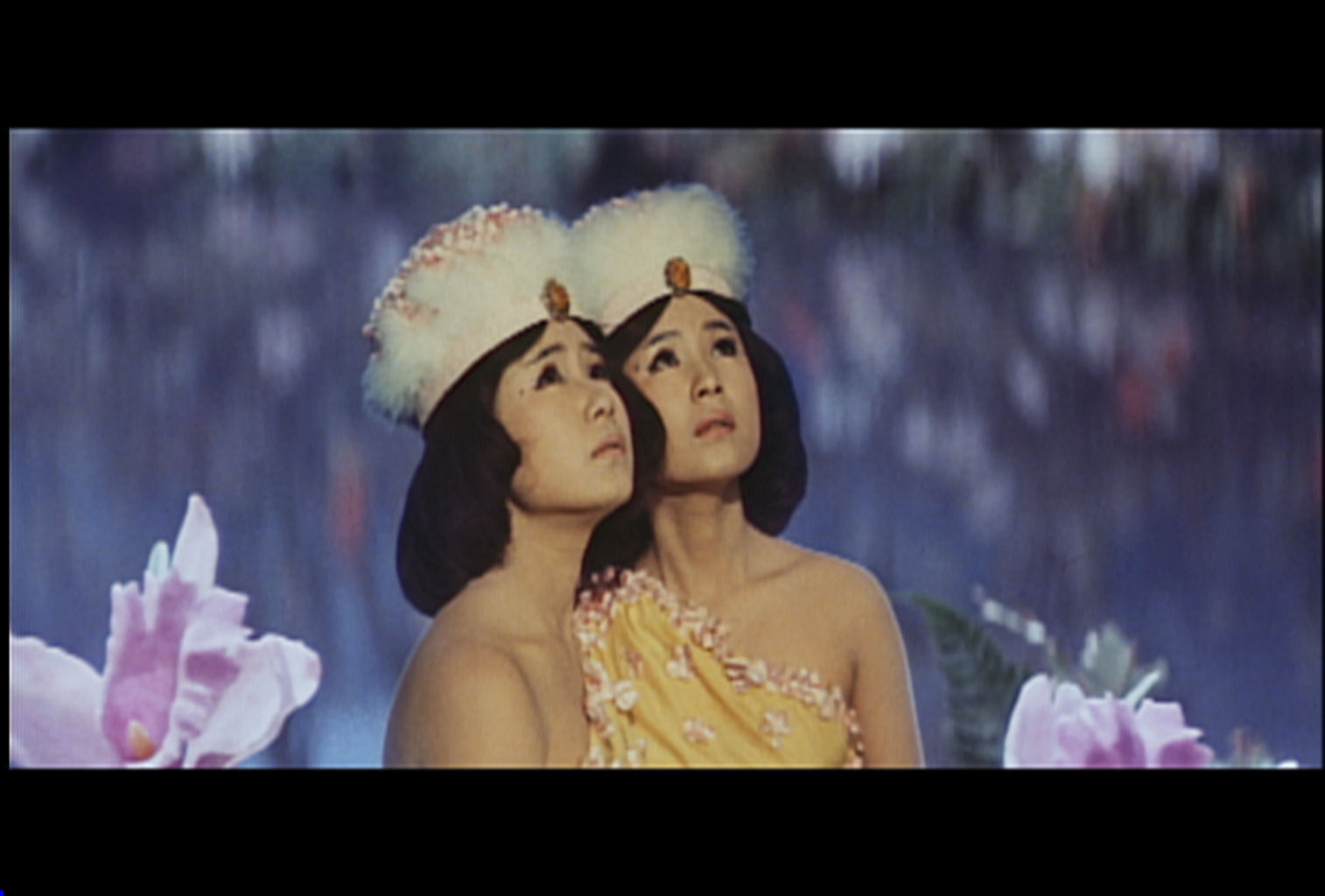
DVD DETAILS
In the U.S., GODZILLA VS. THE THING has been released several times on VHS, laserdisc, and DVD (often with title on the box art changed to “Godzilla vs. Mothra”). Perhaps because this film was not heavily altered for U.S. release, there was less urgency from fans for obtaining a DVD that restored the original version, complete with Japanese language and English subtitles.
The Toho Master Collection DVD , released in the U.S. by Classic Media in 2007, includes both the Japanese-language MOTHRA VS. GODZILLA (with optional subtitles) and the Americanized GODZILLA VS. THE THING (with optional audio commentary). The disc comes in a silver slipcase that resembles a small book. The front cover features colorful poster artwork from the Japanese release; the back has three color images from the film; and the interior includes a black-and-white publicity photo that composites Mothra flying over Godzilla, who is waist deep in the ocean, to create a scene that does not appear in the film. Bonus features include an audio commentary, a poster slideshow, and a biography of Akira Ifukube.
The DVD menu features a collage of poster art from the film. The American and the Japanese version are each divided into 11 chapters, accessible from nearly identical menus: Both versions display the “Godzilla vs. the Thing” title card for the first chapter. However, Chapter 6 of GODZILLA VS THE THING, which begins with the alternate scene that introduces the Frontier missile sequence, is titled “Send in the Fleet.” Chapter 6 of MOTHRA VS. GODZILLA, which begins with a different version of the scene and omits the Frontier missile sequence, is titled “Military Orders.”
The slideshow features fifteen advertising images, backed by audio from the opening credits (including the main title music and the typhoon sound effects). One lobby card, from a 1980 reissue of the movie, features the anachronistic image of the goofy-looking Godzilla suit first seen in 1974’s GODZILLA VS. MECHA-GODZILLA.
The Ifukube biography consists of text that provides a brief rundown of the symphonic composer’s career, emphasizing his work on science-fiction film scores. It ends with a moving tribute from producer Shogo Tomiyama, who worked with Ifukube on Godzilla films in the 1990s.
The audio commentary by Steve Ryfle and Ed Godziszewski is insightful and informative. The duo discuss the changes made to the film for U.S. release, praise the dubbing, point out the film’s message, and offer up interesting tidbits about the techniques used to bring Godzilla and Mothra to life (e.g., special effects director Eiji Tsuburaya talked Toho Studios into purchasing an optical printer, a device that facilitated combining live-action with miniatures, in order to create smoother composite shots of Godzilla appearing above the real city skylines).
Although fans, Ryfle and Godziszewski are willing to point out flaws, such as the high-speed photography that makes Mothra’s wings beat fast enough to show her take flight – but which also makes Godzilla tumble over like a silent movie comedian. They criticize the artificial look of the Infant Island exteriors and report that director Ishiro Honda regretted not fighting for more elaborate island sets. Ryfle also notes that the story is mostly wrapped up by the time the larvae hatch from Mothra’s egg, so the screenplay is forced to gin up a crisis (some school kids left on an island in Godzilla’s path) to fill up the final reel.
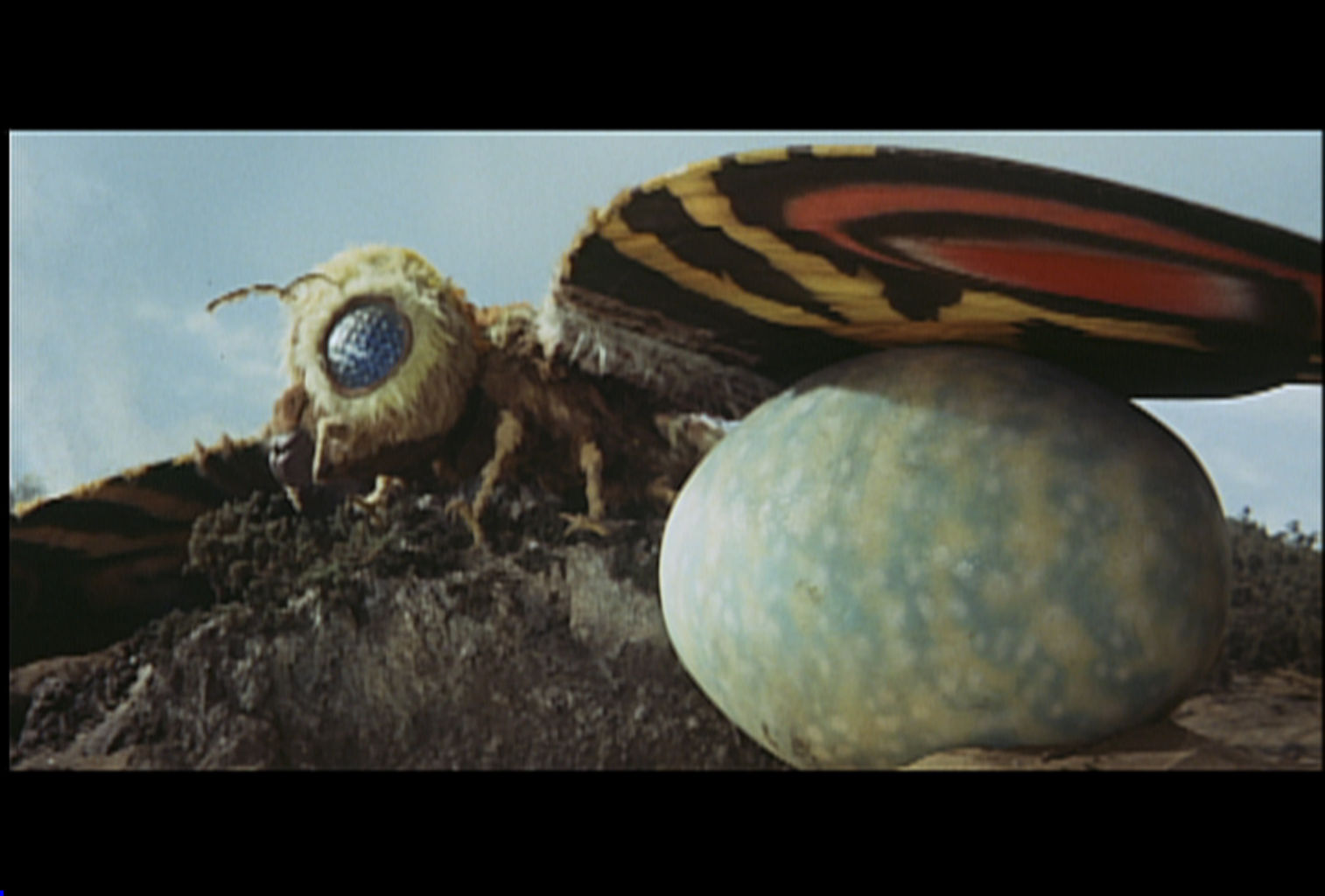
If there is a problem with the commentary it is that the word “realistic” crops up too often in regards to the effects work. By this point in the Godzilla series, it is clear that there was less effort to make the monsters look big and convincing on screen; the scenes of Godzilla battling Mothra or miniatures tanks and airplanes are always exciting and eye-catching, but they are seldom truly convincing.
With all this, the Toho Masters DVD might sound like a must-have item for your collection; unfortunately, the disc falls short in one significant way: image quality. The American print is decent but slightly soft, with colors a tad faded, plus some noticeable scratches and speckling. The Japanese print is better, with a somewhat sharper image and less visible speckling.
The big problem is not colors or scratches but letterboxing, which does not do justice to the widescreen compositions of the original theatrical presentation. MOTHRA VS GODZILLA was shot in a 2.35 anamorphic process that filled the movie screen with special effects, action, beautiful locations, and elaborate sets – some of which are cut off on the DVD.
The American print is framed at approximately a 1.85 aspect ratio that omits large sections of the picture from the left and the right. This problem is most obvious during Godzilla’s brief raid on a metropolitan center. In one elaborate long shot, the camera pans from right to left across a crowd of fleeing people to reveal Godzilla in the far left background – except that he remains off-screen in this version, thanks to cropping off of the edges of the frame.
The Japanese print is considerably better but not perfect. The aspect ratio approximates the theatrical version, with only a minimal loss of picture information on the left and right. In the shot mentioned above, sharp-eyed viewers can catch a glimpse of Godzilla nosing his way into the left side of the frame just before the camera cuts away to another scene.
In this regard, the Toho Masters Collection DVD is inferior to the 1990s Scimitar DVD release of GODZILLA VS MOTHRA, which actually featured a widescreen and a full screen transfer of the English-dubbed GODZILLA VS THE THING.
The widescreen Scimitar transfer framed the image in the correct 2.35 aspect ratio. The print was perhaps darker and grainier, but the speckling was less obvious (except during composite photography). Although far from perfect, the Scimitar version presented the full image to the viewer, so that Godzilla’s dramatic entrance into the panning special effects shot in question was plainly visible.
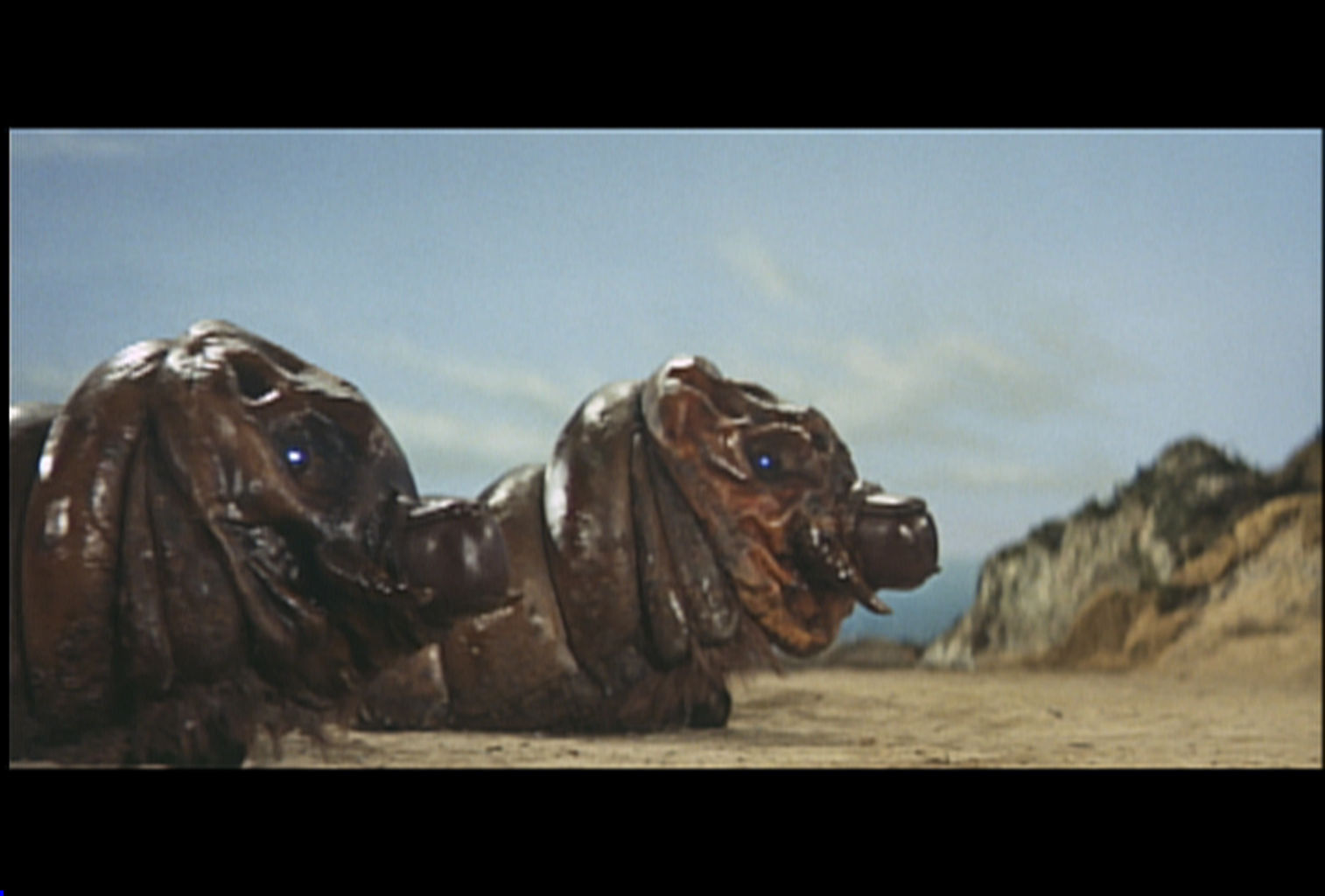
Because of incorrect letter-boxing, the Toho Masters Collection DVD cannot be considered an adequate replacement for the out-of-print Scimitar DVD. The Toho Masters disc is essential for American fans who want to obtain the Japanese version of MOTHRA VS. GODZILLA on DVD. The bonus features make it a nice addition to the collection of any G-Fan, even those who prefer the English-dubbed GODZILLA VS. THE THING. But cropped image transfer prevents this disc from being reckoned as the definitive DVD presentation of one of Toho’s most highly regarded classic monster movies.
 MOTHRA VS. GODZILLA (Mosura Tai Gojira, a.k.a. “Godzilla vs. The Thing,” 1964). Produced by Tomoyuki Tanaka. Directed by Ishiro Honda. Written by Shinichi Sekizawa. Cast: Akira Takarada, Yuriko Hoshi, Hiroshi Koizumi, Yu Fujiki, The Peanuts (Emi and Yumi Ito), Yoshifumi Tajima, Kenji Sahara, Jun Tazaki, Kenzo Tabu, Haruo Nakajima.
MOTHRA VS. GODZILLA (Mosura Tai Gojira, a.k.a. “Godzilla vs. The Thing,” 1964). Produced by Tomoyuki Tanaka. Directed by Ishiro Honda. Written by Shinichi Sekizawa. Cast: Akira Takarada, Yuriko Hoshi, Hiroshi Koizumi, Yu Fujiki, The Peanuts (Emi and Yumi Ito), Yoshifumi Tajima, Kenji Sahara, Jun Tazaki, Kenzo Tabu, Haruo Nakajima.
RELATED ARTICLES:
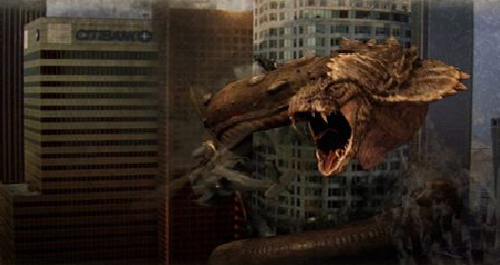

 [NOTE: WHAT DREAMS MAY COME comes out on HD DVD today, so we are posting this review, which first appeared in Cinefantastique when the film was released in 1998. The review has been slightly updated with the benefit of hindsight.]
[NOTE: WHAT DREAMS MAY COME comes out on HD DVD today, so we are posting this review, which first appeared in Cinefantastique when the film was released in 1998. The review has been slightly updated with the benefit of hindsight.]
